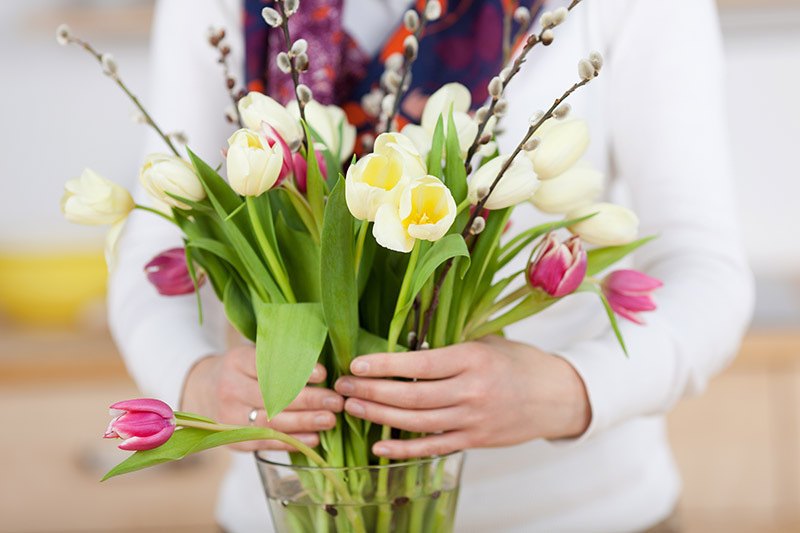Discover how to extend the bloom life of cut flowers
Posted on 29/08/2025
Discover How to Extend the Bloom Life of Cut Flowers: Essential Tips for Lasting Beauty
Are you tired of your beautiful bouquets wilting just days after purchase? Learning how to extend the bloom life of cut flowers will help you enjoy vibrant arrangements for longer, whether you've chosen a romantic bunch of roses, cheerful tulips, or a mixed seasonal bouquet. In this comprehensive guide, we'll explore simple yet science-backed methods to make your cut flowers last longer, plus key mistakes to avoid and expert florist secrets to keep your blooms fresh and lively.

Why Do Cut Flowers Wilt Quickly?
Before diving into tips on preserving the freshness of your cut flowers, it's important to understand why they fade fast. Once flowers are cut from their plant, they lose their primary water and nutrient source. They rely on you to supply proper care. Factors such as bacteria, air bubbles, temperature, light exposure, and stem structure all play vital roles in determining the life span of your floral arrangements.
Key Causes of Wilting Cut Flowers:
- Bacterial growth in the vase water, which blocks stems from absorbing water
- Dehydration of stems and blooms
- Poor water quality, such as water with high chlorine or fluoride
- Lack of nutrients to feed the cut stems
- High temperatures and direct sunlight causing premature aging
- Ethylene gas, emitted by fruit, which can speed up flower decay
- Improperly trimmed stems
Best Practices: How to Prolong the Life of Cut Flowers
If you want to keep your flowers fresh longer, implementing a few key strategies makes a world of difference. From the moment you receive or pick the flowers, these best practices apply to every variety.
1. Use a Clean Vase
Always start with a spotless vase. Rinse thoroughly with warm, soapy water to remove old bacteria and debris, then rinse it again to eliminate any soap traces. Bacteria is one of the biggest culprits behind short-lived cut flowers.
2. Trim the Stems Correctly
Cutting flower stems at a 45-degree angle, rather than straight across, increases surface area so flowers can absorb more water. Use sharp, clean scissors or pruning shears to prevent crushing the stems. Re-trim every 2-3 days for optimal water uptake.
- Remove leaves that will sit below the waterline to prevent rot and bacterial growth.
- For woody stems (like hydrangea or lilac), gently split or crush the ends to increase water absorption.
3. Prepare Fresh Water Daily
Change the vase water every other day, or daily if possible. Warm or room-temperature water is best for most flowers. Always clean the vase when you change the water to remove any developing bacteria.
4. Add Flower Food or DIY Preservatives
Florists include flower food for a reason--these little packets contain sugar (nutrition), acid (to balance pH), and bleach (to block bacteria). If you run out, try this homemade mix in your vase water:
- 2 tablespoons lemon juice
- 1 tablespoon sugar
- 1/2 teaspoon household bleach
- 1 quart lukewarm water
Thoroughly dissolve these ingredients and use the solution for your cut flowers. This supports longer bloom life for cut flowers by nourishing and protecting them.
5. Store Flowers in the Right Location
Keep arrangements away from direct sunlight, heat sources, and fruit bowls. Warm temperatures and ethylene from ripening fruit accelerate wilting. A cool (not cold!), shaded spot is ideal.
- At night, move flowers to the coolest room in your home to further extend their life.
- Do not place flowers near heating vents, atop appliances, or in drafts.
6. Remove Wilting Blooms Promptly
As soon as you notice any flowers in your vase starting to droop or mold, remove them instantly. Decaying blooms release bacteria and ethylene, which can spoil the rest of your bouquet rapidly.
Special Tips by Flower Type: Ensuring Maximum Vase Life
Roses
- Remove guard petals for a cleaner look and better airflow.
- Recut stems every 2 days and remove submerged leaves.
Lilies
- Snip off pollen-coated anthers to prevent staining and prolong bloom.
- Keep away from fruit; lilies are sensitive to ethylene.
Hydrangeas
- Dunk heads in cool water for 30 minutes to rehydrate wilting blooms.
- Split or crush thick stems before placing in water.
Tulips
- Use cold water and keep the vase in a cool room.
- Support the weak stems with a few sprigs of Ruscus or other greenery.
Daffodils
- Keep separate from other flowers, as cut daffodils release a sap that can shorten the lifespan of neighboring blooms.
Common Mistakes That Shorten Flower Bloom Life
Avoiding these pitfalls will help you make cut flowers last longer:
- Leaving leaves submerged in water: They decay and encourage bacterial growth.
- Neglecting to re-trim stems: Ends seal up, blocking water absorption.
- Using dirty vases: Even trace bacteria can rapidly spoil flowers.
- Exposure to extreme temperatures: Heat and cold can stress blooms.
- Forgetting to add or refresh flower food.
- Crushing soft stems with dull scissors: Always use sharp, clean tools.
Surprising Ways to Revive Drooping Cut Flowers
Even with the best care, flowers sometimes droop prematurely. Try these quick fixes to potentially bring your cut flowers back to life:
- For roses and other soft-stemmed flowers: Submerge the entire flower (stems and all) in lukewarm water for 30 minutes. Let them drink up, then recut the stems before returning to the vase.
- For snapped or bent stems: Use clear drinking straws as splints or orthodontic wax for support.
- Refrigerate overnight: Just like florists do, refrigeration at 36-40?F can temporarily pause blooms' aging.
If flowers look dehydrated, mist the blooms and leaves with water for a gentle refresh.
Top Florist Secrets to Make Flowers Last Longer in a Vase
Professional florists have tried-and-true tactics for extending the bloom life of cut flowers. Some of their lesser-known tips include:
- Never use metal or rusted vases, as these can react with water and compromise flower longevity.
- Add a dime or a copper penny to the vase for natural antibacterial properties--especially for tulips.
- If you run out of flower food, add 2 drops of vodka (yes, really!) and a teaspoon of sugar to the water--vodka helps inhibit bacteria.
- Don't overcrowd the vase: Overpacked flowers restrict airflow and can promote mold.
- When in doubt, cut under water. This ensures no air bubbles enter the stems, which can block water flow.

Frequently Asked Questions on Lengthening Cut Flower Life
How long can you make cut flowers last?
With optimal care, most cut flowers stay fresh for 7-10 days. Hardy blooms (like carnations or chrysanthemums) can last up to two weeks, while delicate flowers (such as poppies or sweet peas) may only last 3-5 days. Consistent water changes, stem trimming, and use of flower food give the best results.
What can you add to water to extend flower life?
Commercial flower food is the top choice. DIY alternatives include mixtures of sugar, citric acid (or lemon juice), and bleach. Avoid home remedies using aspirin or vinegar, as these can harm certain flowers.
Is it true that refrigerated flowers last longer?
Yes! Lower temperatures slow respiratory processes and bacterial growth, helping arrangements stay fresh and vibrant longer. Store overnight in the refrigerator if feasible, but avoid freezing.
Conclusion: Enjoy Your Blooming Beauty for Longer
Understanding how to keep cut flowers fresh and blooming is a blend of art and science. By applying these expert tips, you can transform your home into a haven of long-lasting floral color and fragrance. Remember--the best care for your blooms involves fresh water, clean vessels, sharp tools, and a cool location.
Experiment with our tricks, and surprise yourself and your guests with bouquets that simply shine longer. Let your arrangements be a daily source of joy--beautiful, thriving, and ever-fresh!
Now that you know how to extend the bloom life of cut flowers, share this guide with friends and family so everyone can enjoy lasting floral elegance.
Latest Posts
Discover how to extend the bloom life of cut flowers
Stress-Free Office Plants for Everyday Joy
Symbolism and Tradition of Valentine's Day Red Roses







